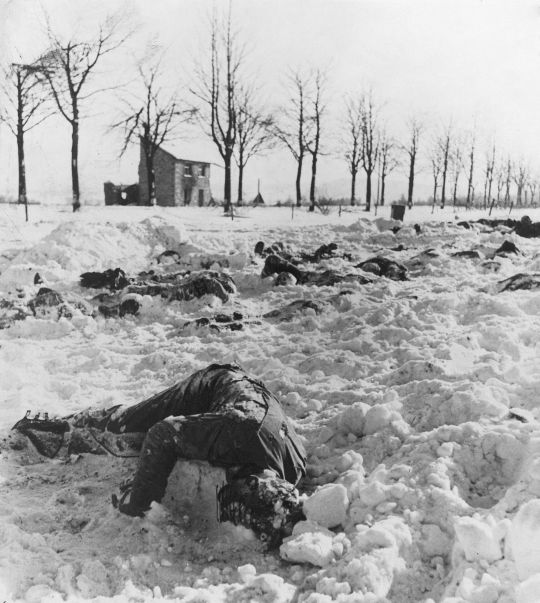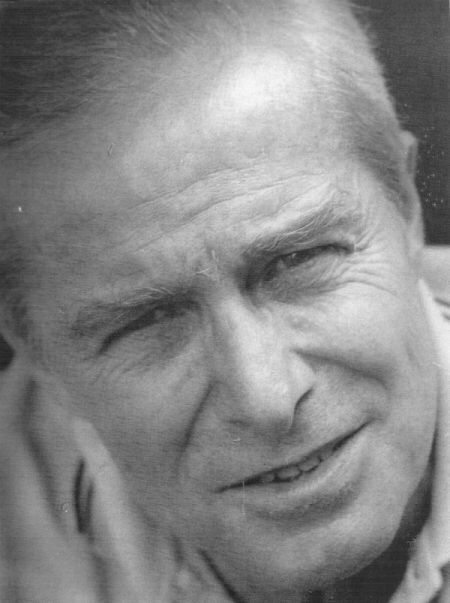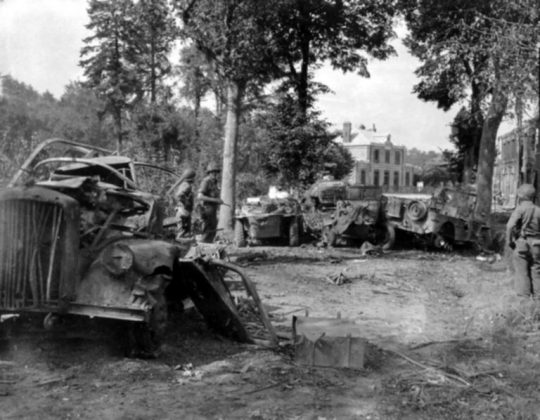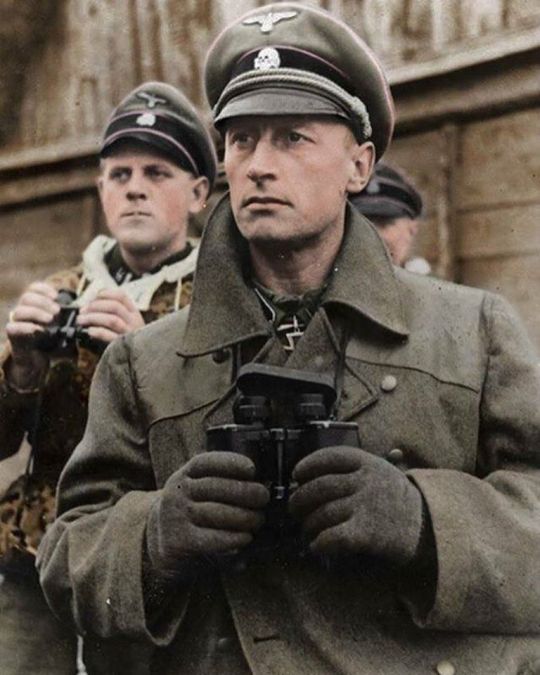#1st SS Leibstandarte
Text

Tigre I Ausf. H de la 1ère Division SS Leibstandarte SS Adolf Hitler – Troisième bataille de Kharkov – Kharkov – Union soviétique – Février 1943
#WWII#front est#eastern front#troisième bataille de kharkov#third battle of kharkov#waffen-ss#1ère division ss leibstandarte ss adolf hitler#leibstandarte ss adolf hitler#1st panzer division leibstandarte ss adolf hitler#char#tanks#char lourd#heavy tank#panzerkampfwagen VI tigre#panzer VI#tigre I#tiger I#kharkov#kharkiv#union soviétique#soviet union#urss#ussr#02/1943#1943
11 notes
·
View notes
Text

MG-34 team from 1st SS Panzer Division Leibstandarte SS Adolf Hitler during fighting in the Battle of Mariupol. October 1941.
89 notes
·
View notes
Text
Joachim Peiper

This is Joachim Peiper timeline:
1915: He was born on 30 January into a middle class family from the Silesian region of Germany.
1926: Peiper followed his other brother Horst and joined the Scout movement.
1933: He volunteered to join the Hitler Youth.
1933: Adolf Hitler was appointed Chancellor of Germany.
1933: He enlisted in the 7th SS Reiterstandarte.
1934: He was promoted to SS-Mann with SS number 132,496.
1934: During the annual Nuremberg Rally, Peiper was promoted to SS-Sturmmann and later gained the attention of Heinrich Himmler.
1935: He was sent to a camp for Hitler Youth, SA and SS members near Jüterbog, adjoining Germany's largest regular army camp and artillery school.
1935: He was promoted to SS-Unterscharführer.
1935: He attended the newly created SS-Junkerschule Bad Tölz.
1936: He completed his education at the Junkerschule.
1936: He attended more training at the Dachau concentration camp.
1936: He took the SS Oath.
1938: He was appointed to an administrative post as an adjutant to Heinrich Himmler, under the command of Karl Wolff.
1939: The Second World War began.
1939: He was with Himmler on 20 September in Blomberg when they witnessed the execution of twenty Poles.
1939: He worked with Himmler to develop policies and plans for controlling the Polish population.
1939: He and Himmler witnessed the gassing of a resident of a psychiatric facility in Poznan.
1940: He obtained permission to join a combat unit and became a platoon leader in the 11th Company of 1st SS Division Leibstandarte SS Adolf Hitler (LSSAH).
1940: He accompanied Himmler to Madrid where Himmler met with Franco.
1940: He was appointed first adjutant to Himmler.
1940: He was awarded the Iron Cross and promoted to Hauptsturmführer.
1941: He accompanied Himmler when he inspected Ravensbrück and Dachau concentration camps.
1941: Together with Karl Wolff and Fritz Bracht, he and Himmler visited Auschwitz.
1942: He learned of the death of his brother Hans-Hasso.
1942: The LSSAH was transferred to France for rest and refit. En route to France, Peiper left his unit and met with Himmler at his headquarters on 1 June.
1943: He was promoted to SS-Obersturmbannführer.
1943: He was awarded the Deutsches Kreuz in Gold for his achievements.
1943: He was awarded Germany's highest decoration, the Knight's Cross of the Iron Cross.
1943: The LSSAH was withdrawn from the Eastern Front and transferred to the area of Cuneo in Northern Italy.
1943: On 19 September, partisans in the village of Boves captured two of Peiper's men. The two men were freed, but the Germans then set fire to the houses in the village and killed 22 men when they tried to flee.
1943: Peiper’s unit arrived on the Eastern Front, where it took part in combat in the area of Zhytomyr.
1943: Georg Schönberger was killed in action, and Peiper took his place as commander of the 1st SS Panzer Regiment; a position he held until the end of the war.
1943:He was awarded the Oak Leaves of the Knight's Cross.
1944: He was withdrawn from the front and left his unit. He went directly to the headquarters of Hitler, who presented him with the Oak Leaves to be added to his Knight's Cross.
1944: He was promoted to Obersturmbannführer.
1945: In January the Swords were added to his Knight's Cross.
1945: His unit took part in Operation Frühlingserwachen that failed even though Peiper’s unit recorded huge casualties due to his aggressive style of command. Peiper lost numerous old companions.
1945: The Second World War ended.
1945: Accompanied by Paul Gühl, Peiper tried to escape captivity.
1945: He was captured near Schliersee. This was less than 30 kilometres from his home. He was interned in the Dachau concentration camp.
1946: His trial took place at Dachau from 16 May to 16 July 1946 before a military tribunal of senior American officers, operating under rules established by the Nuremberg International Military Tribunal.
1946: He was sentenced to death by hanging.
1948: The sentence was commuted to life imprisonment.
1956: He was released from prison on parole.
1957: He began work at Porsche in Stuttgart in its technical division.
1964: Two Italians filed an accusation against him at the Central Office of the State Justice Administration for the Investigation of National Socialist Crimes in Ludwigsburg related to the Boves massacre.
1967: The case was dismissed for lack of evidence.
1969: He was a freelance collaborator for the magazine Auto, Motor und Sport.
1972: He moved to Traves.
1976: He was murdered
Sources:
Military Wiki: Joachim Peiper
Wikipedia: Joachim Peiper.
❗❗I DON'T SUPPORT NAZISM,FASCISM OR ZIONISM IN ANY WAY, THIS IS AN EDUCATIONAL POST❗❗
88 notes
·
View notes
Text

Soldiers of the 1st SS-Leibstandarte Adolf Hitler Division, resting in a ditch alongside a road on the way to Pabianice, during the invasion of Poland in 1939
#germany#ww2#waffen ss#leibstandarte#leibstandarte adolf hitler#1939#invasion of poland#third reich#nazi germany
10 notes
·
View notes
Text
1976-Joachim Peiper

Joachim Peiper (30 January 1915 – 14 July 1976) was a German Schutzstaffel (SS) officer and war criminal convicted for the Malmedy massacre of U.S. Army prisoners of war (POWs). During the Second World War in Europe, Peiper served as personal adjutant to Heinrich Himmler, leader of the SS, and as a tank commander in the Waffen-SS. Peiper personified Nazi ideology as a purportedly ruthless glory-hound commander who was indifferent to the combat casualties of Battle Group Peiper, and who encouraged, expected, and tolerated war crimes by his Waffen-SS soldiers.

As adjutant to Himmler, Peiper witnessed the SS implement the Holocaust with ethnic cleansing and genocide of Jews in Eastern Europe; facts that he obfuscated and denied in the post–War period. As a tank commander, Peiper served in the 1st SS Panzer Division Leibstandarte SS Adolf Hitler (LSSAH) in the Eastern Front and in the Western Front, first as a battalion commander and then as a regimental commander. Peiper fought in the Third Battle of Kharkov and in the Battle of the Bulge, from which battles his eponymous battle group – Kampfgruppe Peiper – became notorious for committing war crimes against civilians and PoWs.

In the Malmedy Massacre Trial, the U.S. military tribunal established Peiper's command responsibility for the Malmedy massacre (1944) and sentenced him to death, which later was commuted to life in prison, then 35 years. In Italy, Peiper was accused of having committed the Boves massacre (1943); that investigation ended for lack of war-crime evidence that Peiper ordered the summary killing of Italian civilians.




Upon release from prison, Peiper worked for the Porsche and Volkswagen automobile companies and later moved to France, where he worked as a freelance translator. Throughout his post-war life, Peiper was very active in the social network of ex–SS men centred upon the right-wing organisation HIAG (Mutual Aid Association of Former Members of the Waffen-SS).

In 1972, Joachim and Sigurd Peiper moved to Traves, Haute-Saône, in eastern France, where he owned a house. Under the pseudonym "Rainer Buschmann", Peiper worked as a self-employed English-to-German translator for the German publisher Stuttgarter MotorBuch Verlag, translating books of military history.[27] Despite his biography and working pseudonymously, they lived under his true, German name, "Joachim Peiper", and soon attracted the notice of anti-fascists.

The confirmation of Peiper's Nazi identity and presence in France attracted journalists to whom Peiper readily gave interviews, wherein he claimed that he was a victim of Communist harassment due to his role in the war. In an interview (J’ai payé "I Already Have Paid"), Peiper said he was an innocent man who had paid for his war crimes (referring to the Malmedy massacre) with twelve years of prison. He said he was innocent of the earlier Boves massacre war crime in Italy. He also said "In 1940, French people weren't brave, that's why I'm here". These insulting remarks angered the press and residents. It was reported that he and his wife left France and moved to the German Federal Republic due to ongoing death threats.

On Bastille Day 14 July 1976, French anti-Nazis attacked and torched Peiper's house in Traves. When the fire was extinguished, firefighters found the charred remains of a man holding a pistol and a .22 calibre rifle, as if defending himself.[128] The arson investigators determined that person had died from smoke inhalation. The anti-Nazi political group The Avengers claimed responsibility for the arson that killed Peiper; nonetheless, because of the destruction caused by the arson, the French police authorities remained unconvinced that Joachim Peiper was the person found.
24 notes
·
View notes
Text

On December 17, 1944 elements of the 1st SS Panzer Division Leibstandarte SS Adolf Hitler, commanded by Obersturmbannführer Joachem Peiper, massacred 84 U.S. Army prisoners of war at a crossroads near the village of Malmédy in Belgium.
1 note
·
View note
Text


Hermann Dahlke
He was born on 11 February 1917 in Greifswald. In 1933 he joined the Hitler Youth, then later joined the volunteer labour service and then applied to join the SS and was posted to the Leibstandarte Adolf Hitler.
World War II
Dahlke was awarded the Knight's Cross on 3 March 1943 as an SS-Oberscharführer (Staff Sergeant), when in a well executed attack, his unit broke into the enemy's southern positions during the Third Battle of Kharkov. His platoon threw back the numerically superior enemy in hand-to-hand fighting and thus made a decisive contribution to the successful advance of the battalion and the whole battle group. Promoted to SS-Untersturmführer (Second Lieutenant), he was given command of the 3rd Company, 1st SS Panzer Grenadier Regiment LSSAH and was killed in action on 5 July 1943 on the Russian Front near Belgorod.
0 notes
Text

3 notes
·
View notes
Text

US soldiers are taken prisoner by the 1st SS Panzer-Division Leibstandarte Adolf Hitler near Poteau - Battle of Bastogne 1944
8 notes
·
View notes
Text

• Battle of the Bzura
The Battle of the Bzura (or the Battle of Kutno) was the largest battle of the 1939 German invasion of Poland, fought, between Polish and German forces.
The Polish plan for defense against the German invasion, Plan West, called for the defense of the borders. This was dictated more by political than military concerns, as Poles feared that the Germans, after taking over territories they lost in the Treaty of Versailles, would try to end the war and keep those territories. While defending the borders was riskier, the Poles were counting on the British and French counteroffensive (that never came). Due to this, Army Pomorze under general Władysław Bortnowski found itself in the Polish Corridor, surrounded by German forces on two fronts, and Army Poznań under general Tadeusz Kutrzeba was pushed to the westernmost fringes of the Second Polish Republic, separated both from its primary defensive positions, and from other Polish Armies. The German offensive proved the folly of the border defense plan in the first days of the war. Army Pomorze was defeated in the battle of Bory Tucholskie, and forced to retreat towards the south-east. Army Poznań, meanwhile, although not facing heavy German assaults, was forced to retreat east due to defeats of its neighbours. meaning that Army Poznań was in danger of being flanked and surrounded by the German forces. On September 4th, Army Poznań moved through Poznań and abandoned it to the enemy, although at this point it was not in contact with any significant German forces. By September 6th, Armies Pomorze and Poznań had linked, forming the strongest Polish operational unit in the campaign, and general Bortkowski accepted the command of general Kutrzeba.
On September 7th, Polish forces became aware of the German push towards Łęczyca, which if successful could cut off the retreat route of Polish forces. By September 8th, advanced German troops reached Warsaw, marking the beginning of the siege of Warsaw in 1939. At the same time, German forces had lost contact with Army Poznań, and German command assumed that the army must have been transported by rail to aid Warsaw's defense; they were unaware that in fact Army Poznań had merged forces with Army Pomorze, which they considered, since its defeat at Bory Tucholskie, no longer a significant threat.
Polish forces consisted of Army Poznań and Army Pomorze. German forces included the 8th Army under Johannes Blaskowitz and 10th Army under Walther von Reichenau of Army Group South, elements of the 4th Army under Günther von Kluge of the Army Group North and air support (Luftflotte 1 and Luftflotte 4). The battle can be divided into 3 phases: Phase I, Polish offensive towards Stryków, aiming at the flank of the German 10th Army, Phase II, Polish offensive towards Łowicz, Phase III, German counterattack and eventual defeat of the Poles, with the latter's withdrawal towards Warsaw and Modlin. On the night of September 9th, the Polish Poznań Army commenced a counterattack from the south of the Bzura river, its target being the German forces from the 8th Army advancing between Łęczyca and Łowicz, towards Stryków. The commander of Poznań Army, Tadeusz Kutrzeba noticed that the German 8th Army, was weakly secured from the north by only the 30th Infantry Division stretched over a 30 kilometre defensive line while the rest of the army was advancing towards Warsaw. The main thrust of the Polish offensive were the units under general Edmund Knoll-Kownacki, known as the Knoll-Kownacki Operational Group. The right wing of the offensive, in the area Łęczyce, included the Podolska Cavalry Brigade under Col. L. Strzelecki, and on the left, advancing from Łowicz to the area of Głowno, the Wielkopolska Cavalry Brigade under general Roman Abraham. These groups inflicted considerable losses on the German defenders from the 30th Infantry Division and the 24th Infantry Division, with some 1,500 German soldiers killed or wounded and an additional 3,000 lost as prisoners during the initial push. The cavalry brigades supplemented with TKS and TK-3 reconnaissance tanks moved to threaten the flanks and rear of the advancing German units.
The German forces were thrown back approximately 20 kilometres and the Poles recaptured several towns, including Łęczyca and Piątek, and the village of Góra Świętej Małgorzaty. On September 10th, the Polish 17th Infantry Division met the German 17th Infantry Division at Małachowicze. The following day Polish forces continued their attack, advancing on Modlna, Pludwiny, Osse and Głowno. Initially underestimating the Polish advance, the Germans decided on September 11th, to redirect the main force of the German 10th Army, the German 4th Army, the reserves of the Army Group South, and aircraft from 4th Air Fleet towards the Bzura. These forces included the German 1st Panzer Division, German 4th Panzer Division and the newly formed SS Infantry regiment Leibstandarte Adolf Hitler. German air superiority had a significant impact, making it very costly and difficult for the Poles to move units during the day. The following day the Poles reached the line Stryków-Ozorków. That day General Tadeusz Kutrzeba learned that units of Army Łódź had retreated to the Modlin Fortress, and decided to stop the offensive, instead looking to try to break through Sochaczew and the Kampinos Forest to reach Warsaw. On the morning of September 14th, General Władysław Bortnowski's 26th and 16th Infantry Divisions crossed the Bzura near Łowicz. The Polish 4th Infantry Division reached the road linking Łowicz with Głowno. At this point however, Bortnowski ordered the 26th Infantry Division to retreat. He had learned of the withdrawal of the German 4th Panzer Division from the outskirts of Warsaw, and was concerned that this Panzer division posed a threat to his men.
On the 15th and 16th September, Army Pomorze took up defensive positions on the north bank of the Bzura. General Stanisław Grzmot-Skotnicki's group was between Kutno and Żychlin, General Michał Karaszewicz-Tokarzewski's units near Gąbin, and parts of Army Poznań by the Bzura near Sochaczew, were ready to begin their drive towards Warsaw. To encircle and destroy the Polish forces, the Germans used most of their 10th Army, including two armoured, one motorized, and three light divisions, equipped with some 800 tanks altogether. The attack from all sides on Polish positions started on September 16th, with the support of the Luftwaffe. On September 15th, Poles were forced out of Sochaczew, a town on the Bzura river, and trapped in a triangle of Bzura, Vistula and German forces. The German 1st Panzer Division, after crossing the Bzura between Sochaczew and Brochów and engaging the Polish 25th Infantry Division managed to capture Ruszki, but its advance was then halted. Poles began to cross the Bzura near the Vistula, north of Sochaczew, and retreat towards Warsaw. Polish forces were forced to abandon most of their heavy equipment while crossing the river. On September 17th, German heavy artillery was shelling the crossing north of Brochów, and the largest air operation of the campaign began, with the Luftwaffe attacking the retreating Polish forces. During the night of September 17th, the main forces of Army Poznań attacked the German forces in order to break out of the German encirclement between Witkowice and Sochaczew. The 15th Infantry Division and Podolska Cavalry Brigade again crossed the Bzura in Witkowice. In Brochow, the 25th and 17th Infantry Divisions crossed the Bzura river. The 14th Infantry Division was concentrated in Łaziska. At the same time, Army Pomorze marched towards the villages of Osmolin, Kierozia and Osiek.
In the morning the Germans started their drive towards the south along both banks of the Bzura, supported by more than 300 aircraft and heavy artillery. German howitzers, taking advantage of their position on the high ground of the Vistula's right bank, shelled Polish positions for the entire day. And after two days of heavy fighting, with no ammunition or food rations remaining, further attempts at a breakout for the Poles became impossible. Only a few Polish units managed to break out of the encirclement. These groups entered Warsaw and Modlin, mostly around the 19th and 20th September, crossing the Kampinos Forest, and fighting German units in the area. Among them were Generals Kutrzeba, Knoll-Kowacki and Tokarzewski, two cavalry brigades (Wielkopolska and Podolska) of General Abraham, and the 15th and 25th Infantry Divisions. The remainder (4th, 14th, 17th, 26th and 27th Infantry Divisions), which didn't manage to cross the river, with General Bortnowski, capitulated between the 18th and 22nd of September. Polish casualties were estimated at 20,000 dead, including three generals. German casualties are estimated at 8,000 dead. After the battle the remaining German divisions rushed towards Warsaw and Modlin and soon encircled both. The Bzura campaign ended in defeat for the Poles but because of the initial Polish local successes the German advance on Warsaw was halted for several days. The Wehrmacht was required to divert units from its push towards Warsaw. This enabled the Polish units defending Warsaw and its environs to better organize their own long-term, but ultimately failed, defense of the capital.
#world war 2#wwii#world war ii#history#second world war#military history#german history#polish history#invasion of poland#calvary
79 notes
·
View notes
Photo

Panzergrenadier lourdement armé pendant l'offensive allemande dans les Ardennes - Bataille des Ardennes - Poteau - Belgique - 18 décembre 1944
©US National Archives 111-SC-197561
Certaines sources indiquent que ce grenadier est Wally Armbrusch du Kampfgruppe Hansen (2e compagnie, I./SS-Pz.Gren.Rgt 1 LAH), l’un des quatre groupements tactiques de la 1ère Division SS Leibstandarte SS Adolf Hitler engagée dans la contre-offensive des Ardennes. D'autres affirment qu'il s'agit de Hans Tragarsky.
Plus que l'utilisation de ces images pour alimenter la propagande nazie en Allemagne, les nombreuses photos de ce soldat sur ce théâtre d'opération et l'expression de son visage ont contribué à construire un mythe autour de ce soldat...
#WWII#Bataille des Ardennes#battle of the bulge#Waffen-SS#1ère Division SS “Leibstandarte SS Adolf Hitler”#1st ss panzer division leibstandarte ss adolf hitler#Visages de guerre#Poteau#Ardennes#Belgique#belgium#18/12/1944#12/1944#1944
27 notes
·
View notes
Text

Soldiers from 1st SS Panzer Division Leibstandarte SS Adolf Hitler enjoying a smoke.
2 notes
·
View notes
Photo

Panzergrenadiers of the 1st SS Panzer Division ‘Leibstandarte SS AH’ on the East Front. https://www.instagram.com/p/CJHsTCqpiu9/?igshid=dcgvvfyup6ov
26 notes
·
View notes
Photo

Grenadiers from the reconnaissance detachment (Aufklärungs-Abteilung LAH) of the 1st SS Panzer Division Leibstandarte SS Adolf Hitler watch the SS-Hauptsturmführer Kurt Meyer and a Soviet officer in a meeting. Ukraine, July 10, 1941. This episode became famous thanks to Meyer's memories.
14 notes
·
View notes
Photo

Destroyed combat vehicles from the SS 1st Panzer Division Leibstandarte SS Adolf Hitler
3 notes
·
View notes
Photo

SS Standartenführer Max Hansen (31 July 1908 - 7 March 1990) Commander in the 1st SS Panzer Grenadier Regiment on 1st SS Leibstandarte Adolf Hitler Division.
5 notes
·
View notes